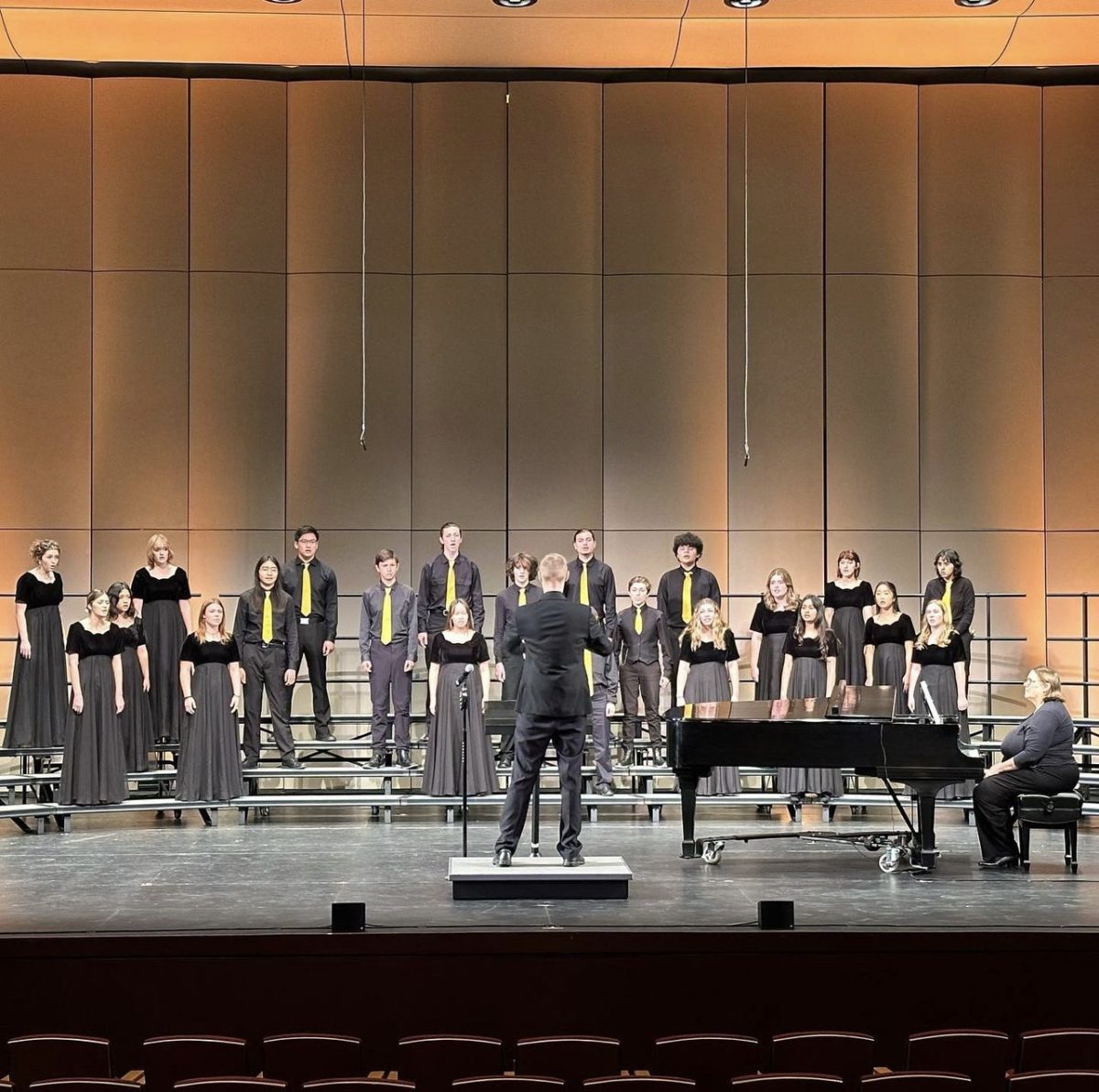This past Monday, October 16th, Canyon’s Chamber Singers Choir went to San Dimas for their first festival of the year. This festival gave Canyon and three other high schools the opportunity to display the music they’ve been working on and get critiques from an esteemed adjudicator. Unlike most other festivals Choir attends, this one focused on the aspect of sharing the music through a showcase rather than competing for a title and trophy.
When we arrived, we were ushered into a beautiful auditorium and greeted by the sound of another choir warming up. After each high school had completed its designated warm-up time, Canyon was the first to take the stage to officially start the festival. In our set, we sang “Consecrate the Place and Day” a song about honoring the musical Saint Cecilia, “Ave Verum Corpus” a reverent piece composed by Wolfgang Amadeus Mozart, and “Muie Rendera” a Brazilian folk song about a lacemaker who flirts with a monk. Although audience members hear the complexity of the sound, many don’t stop to think about those technicalities.
To create an impactful performance, choir singers must have a keen awareness of their surroundings. Not only do you have to memorize and remember your notes, rhythms, and dynamics, but you also must pay close attention to your director’s conducting, which helps the whole choir stay in tempo. The hand movements a director uses to conduct act as a pathway of communication between them and the singers. By watching, you can recognize the change in speed or sound if the director’s hands alter in motion emphasis. These detailed modifications can be made instantly if the director sees fit, making it easy to miss if you’re not focused. Additionally, being the biggest challenge of singing in a choir, you must be conscious of the other singers. Since choir is a group effort, different sections must stay perfectly unified in order for the sound to come through strongly and accurately. This means that while I’m listening and singing my alto part, I’m also listening to the sopranos, tenors, and basses. Listening ensures each part is lined up in the music, indicating the tempo is being kept correctly.
These are all aspects our adjudicator kept in mind when critiquing us and giving feedback. We spent our time focusing on “Muie Rendera” and recognizing when each part should be the center of attention throughout the song. Overall, our group did very well and impressed the adjudicator with our comprehension and application of her comments. I’m excited for Chamber Singers’ next festival on November 1st and for the ways our group will continue to grow and gel together as the year goes on.

